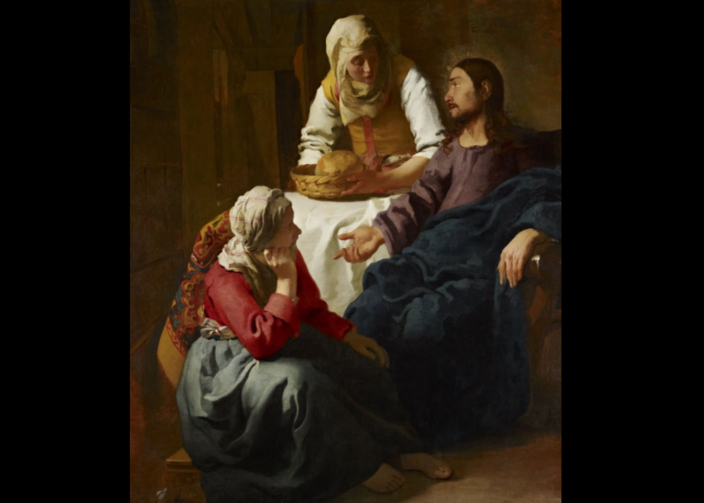James Martin, S.J.: We need to be both Mary and Martha
A Reflection for the Memorial of Sts. Martha, Mary and Lazarus
Too often this passage, in which Martha complains about Mary not helping with the diakonia (work or ministry, by the way, not cooking, as it is often portrayed), has led to the denigration of the active life and active people.
Sometimes people cluck their tongues at hard-working men and women and say, “Martha, Martha,” knowing that the listener will fill in the blanks: “You’re just like Martha, someone who works too hard!” Alongside that is the implication that the person is oblivious or even addicted to overwork. Or that these Marthas are not contemplative enough.
Sometimes such comments are good-natured, but they can also make active people feel needless guilt. That interpretation works against one of the hallmarks of Jesus’s public ministry: action.
After all, this story of Martha’s service or ministry at Bethany comes immediately after Jesus tells the parable of the Good Samaritan. In that story, the hero, who cares for a man who has been beaten and left beside the road, is active: He bandages the man’s wounds, puts him on his donkey, takes him to an inn and pays the innkeeper. He doesn’t simply sit by the side of the road and pray for him. He does something.
Jesus was prayerful. He led a contemplative life. We are told many times that he felt the need to “withdraw” from the disciples and the crowds to pray. This is especially the case in Luke’s Gospel, often called the “Gospel of Prayer.” Jesus also encourages others to pray.
Jesus is encouraging someone he loved (and us) to slow down from time to time, to understand that there is a time for action and a time for contemplation.
But otherwise, the Gospels depict Jesus as “on the go,” traveling from one town to another, journeying for days at a time. He walks, he sails, he preaches, he eats meals, he visits people in their houses, he bends down to speak to people, he climbs hills and mountains.
He is active. In the Gospel of Mark, Jesus is described in almost breathless terms, as if the evangelist is trying to keep up with all his activity, doing things euthus, immediately. At one point in Mark, Jesus is interrupted on the way to performing one miracle (the raising of the daughter of Jairus) to do another one (the healing of the woman with the hemorrhage).
So, to say that Jesus denigrated the active life is to denigrate his own life.
Nor do I think he is denigrating Martha for her diakonia. If you look at the famous Johannes Vermeer painting of the scene, it’s hard not to think, “Is Jesus castigating her while she’s setting before him a loaf of bread that she’s just baked for him?”
Rather, Jesus is encouraging someone he loved (and us) to slow down from time to time, to understand that there is a time for action and a time for contemplation. We need to be both Mary and Martha.
This is an excerpt from “Come Forth: the Promise of Jesus’s Greatest Miracle, a new book on the Raising of Lazarus,” by James Martin, S.J., now available for pre-order here.




No comments:
Post a Comment